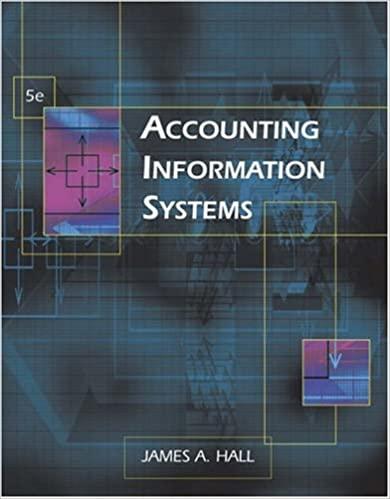Question
The following are various types of accounting changes: For each change or error, indicate how it would be accounted for assuming the company follows IFRS.
The following are various types of accounting changes: For each change or error, indicate how it would be accounted for assuming the company follows IFRS.
| Accounting Treatment | ||||
|---|---|---|---|---|
| 1. | Change in a plant assets residual value | select an Accounting Treatment Accounted for in the current year onlyAccounted for prospectivelyAccounted for retrospectivelyNone of the above, or unable to determine | ||
| 2. | Change due to an overstatement of inventory (in the preceding period) | select an Accounting Treatment Accounted for in the current year onlyAccounted for prospectivelyAccounted for retrospectivelyNone of the above, or unable to determine | ||
| 3. | Change from sum-of-the-years-digits to straight-line method of depreciation because of a change in the pattern of benefits received | select an Accounting Treatment Accounted for in the current year onlyAccounted for prospectivelyAccounted for retrospectivelyNone of the above, or unable to determine | ||
| 4. | Change in a primary source of GAAP | select an Accounting Treatment Accounted for in the current year onlyAccounted for prospectivelyAccounted for retrospectivelyNone of the above, or unable to determine | ||
| 5. | Decision by management to capitalize interest. The company is reporting a self-constructed asset for the first time. | select an Accounting Treatment Accounted for in the current year onlyAccounted for prospectivelyAccounted for retrospectivelyNone of the above, or unable to determine | ||
| 6. | Change in the rate used to calculate warranty costs | select an Accounting Treatment Accounted for in the current year onlyAccounted for prospectivelyAccounted for retrospectivelyNone of the above, or unable to determine | ||
| 7. | Change from an unacceptable accounting policy to an acceptable accounting policy | select an Accounting Treatment Accounted for in the current year onlyAccounted for prospectivelyAccounted for retrospectivelyNone of the above, or unable to determine | ||
| 8. | Change in a patents amortization period | select an Accounting Treatment Accounted for in the current year onlyAccounted for prospectivelyAccounted for retrospectivelyNone of the above, or unable to determine | ||
| 9. | Change from the zero-profit method to the percentage-of-completion method on construction contracts. This change was a result of experience with the project and improved ability to estimate the costs to completion and therefore the percentage complete. | select an Accounting Treatment Accounted for in the current year onlyAccounted for prospectivelyAccounted for retrospectivelyNone of the above, or unable to determine | ||
| 10. | Recognition of additional income tax owing from three years ago as a result of improper calculations by the accountant, who was not familiar with income tax legislation and income tax returns | select an Accounting Treatment Accounted for in the current year onlyAccounted for prospectivelyAccounted for retrospectivelyNone of the above, or unable to determine |
eTextbook and Media
The following are various types of accounting changes: Identify the type of change for each of the situations.
| Type of change | ||||
|---|---|---|---|---|
| 1. | Change in a plant assets residual value | select a type of change Accounting error correctionChange in estimateChange in policyNot an accounting change | ||
| 2. | Change due to an overstatement of inventory (in the preceding period) | select a type of change Accounting error correctionChange in estimateChange in policyNot an accounting change | ||
| 3. | Change from sum-of-the-years-digits to straight-line method of depreciation because of a change in the pattern of benefits received | select a type of change Accounting error correctionChange in estimateChange in policyNot an accounting change | ||
| 4. | Change in a primary source of GAAP | select a type of change Accounting error correctionChange in estimateChange in policyNot an accounting change | ||
| 5. | Decision by management to capitalize interest. The company is reporting a self-constructed asset for the first time. | select a type of change Accounting error correctionChange in estimateChange in policyNot an accounting change | ||
| 6. | Change in the rate used to calculate warranty costs | select a type of change Accounting error correctionChange in estimateChange in policyNot an accounting change | ||
| 7. | Change from an unacceptable accounting policy to an acceptable accounting policy | select a type of change Accounting error correctionChange in estimateChange in policyNot an accounting change | ||
| 8. | Change in a patents amortization period | select a type of change Accounting error correctionChange in estimateChange in policyNot an accounting change | ||
| 9. | Change from the zero-profit method to the percentage-of-completion method on construction contracts. This change was a result of experience with the project and improved ability to estimate the costs to completion and therefore the percentage complete. | select a type of change Accounting error correctionChange in estimateChange in policyNot an accounting change | ||
| 10. | Recognition of additional income tax owing from three years ago as a result of improper calculations by the accountant, who was not familiar with income tax legislation and income tax returns |
Step by Step Solution
There are 3 Steps involved in it
Step: 1

Get Instant Access to Expert-Tailored Solutions
See step-by-step solutions with expert insights and AI powered tools for academic success
Step: 2

Step: 3

Ace Your Homework with AI
Get the answers you need in no time with our AI-driven, step-by-step assistance
Get Started


